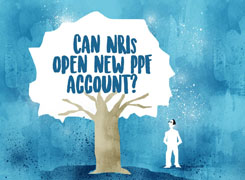Ramalingam Kalirajan |10925 Answers |Ask -Follow
Mutual Funds, Financial Planning Expert - Answered on Apr 13, 2024
He has an MBA in finance from the University of Madras and is a certified financial planner.
He is the director and chief financial planner at Holistic Investment, a Chennai-based firm that offers financial planning and wealth management advice.... more

Hi I am 28 year old I want financial advice I have 2 lakhs of emergency fund, apart from this which is kept in FD, I WANT & planning to invest 10k per month in M.F I am concidering to invest ?6350 in 6 large cap funds, ?2,625 in 5 midcap funds, ?525 in 3 smallcap funds, 1000 in 1 flexicap funds Is this correct way for diversification or I should just invest in only 1 or 2 stocks in each sections apart from above mentioned 15 MF? & Are there any financial advisor in Bengaluru who could suggest me with some ideas for my present stock portfolio which I need to trim?
Diversification Strategy:
Your plan to diversify across large-cap, mid-cap, small-cap, and flexi-cap funds is a good approach. Diversification helps in spreading the risk and capturing growth opportunities across different market segments.
However, investing in 15 mutual funds might be a bit too diversified, which can sometimes dilute returns and make portfolio management complex. Consider consolidating your portfolio to fewer funds while still maintaining diversification.
Alternative Strategy:
Large Cap: Consider investing in 2-3 large-cap funds for stability and consistent returns.
Mid Cap: 1-2 mid-cap funds can offer higher growth potential.
Small Cap: Similarly, 1-2 small-cap funds for higher growth but higher risk.
Flexi Cap: 1-2 flexi-cap funds can provide flexibility across market caps.
Considerations:
Expense Ratio: Keep an eye on the expense ratios. Lower expense ratios can significantly impact your returns over the long term.
Fund Performance: Regularly review the performance of your funds and consider replacing underperforming ones.
Market Conditions: Market conditions can influence the performance of different segments. Keep yourself updated with market trends and adjust your portfolio accordingly.
Financial Advisor Selection:
Please search for "online financial planning & Retirement planning services with a Holistic Approach" in Google and then follow the below steps with the results.
Research: Start by researching reputable brokerage firms that offer mutual fund advisory services. Look for firms with a strong track record, experienced financial advisors, and a range of services tailored to your needs.
Consultation: Schedule a consultation with the brokerage firm to discuss your financial goals, risk tolerance, investment preferences, and other relevant factors. This initial meeting will help the advisor understand your needs and recommend suitable investment strategies.
Advisory Services: Once you've selected a brokerage firm, the advisor will work with you to develop a personalized mutual fund investment plan. They will recommend specific funds based on your financial objectives and provide ongoing guidance to help you navigate the market.
Regular Reviews: Schedule periodic reviews with your advisor to assess the performance of your mutual fund investments, review changes in your financial situation, and make any necessary adjustments to your investment strategy.
By following these steps, you can access the expertise of professional brokerages to assist you in financial planning and investment management.
Stock Portfolio Trimming:
A financial advisor can provide personalized advice on trimming your stock portfolio based on your financial goals, risk tolerance, and market conditions. They can help you identify which stocks to hold, sell, or add based on fundamental and technical analysis.
In conclusion, while your diversification strategy is commendable, consider consolidating your mutual fund portfolio for simplicity and better management. Consult a financial advisor for personalized advice tailored to your financial goals and situation.
You may like to see similar questions and answers below
Ramalingam Kalirajan |10925 Answers |Ask -Follow
Mutual Funds, Financial Planning Expert - Answered on Apr 05, 2024
Ramalingam Kalirajan |10925 Answers |Ask -Follow
Mutual Funds, Financial Planning Expert - Answered on May 17, 2024
Ramalingam Kalirajan |10925 Answers |Ask -Follow
Mutual Funds, Financial Planning Expert - Answered on Jul 29, 2024
Reetika Sharma |459 Answers |Ask -Follow
Financial Planner, MF and Insurance Expert - Answered on Dec 24, 2025
Reetika Sharma |459 Answers |Ask -Follow
Financial Planner, MF and Insurance Expert - Answered on Dec 24, 2025
Reetika Sharma |459 Answers |Ask -Follow
Financial Planner, MF and Insurance Expert - Answered on Dec 24, 2025
Reetika Sharma |459 Answers |Ask -Follow
Financial Planner, MF and Insurance Expert - Answered on Dec 24, 2025
Reetika Sharma |459 Answers |Ask -Follow
Financial Planner, MF and Insurance Expert - Answered on Dec 24, 2025
Reetika Sharma |459 Answers |Ask -Follow
Financial Planner, MF and Insurance Expert - Answered on Dec 24, 2025
Reetika Sharma |459 Answers |Ask -Follow
Financial Planner, MF and Insurance Expert - Answered on Dec 24, 2025
Reetika Sharma |459 Answers |Ask -Follow
Financial Planner, MF and Insurance Expert - Answered on Dec 24, 2025
Reetika Sharma |459 Answers |Ask -Follow
Financial Planner, MF and Insurance Expert - Answered on Dec 24, 2025
Reetika Sharma |459 Answers |Ask -Follow
Financial Planner, MF and Insurance Expert - Answered on Dec 24, 2025









.jpg)












